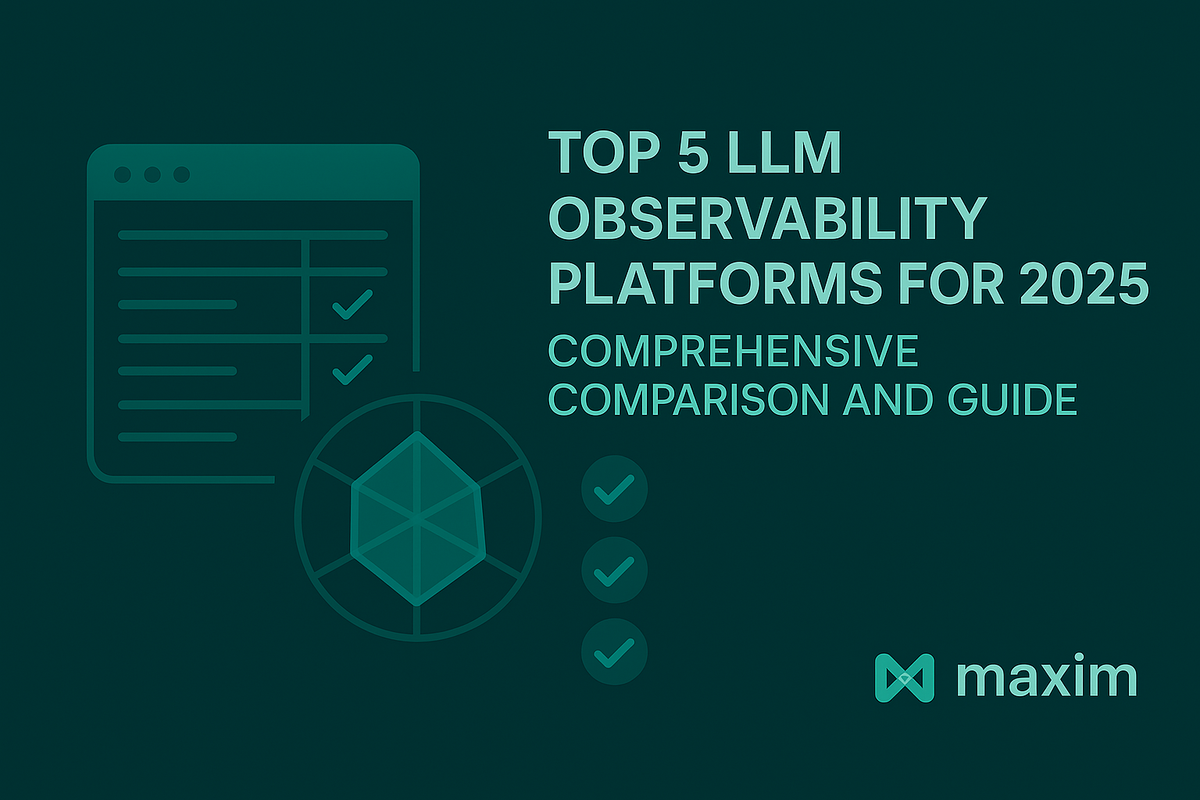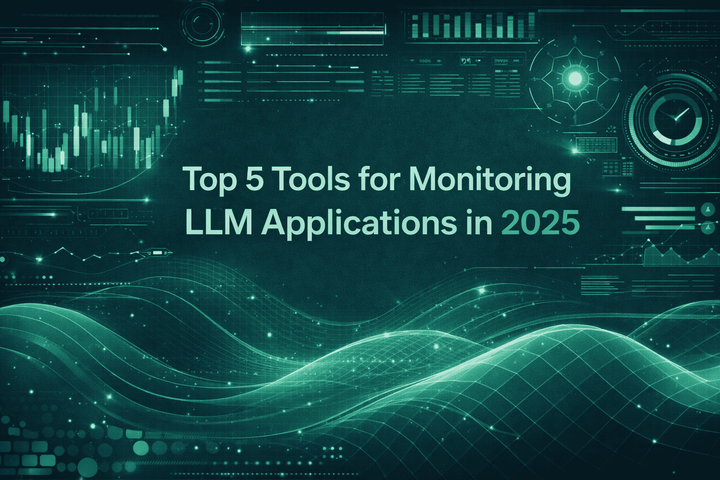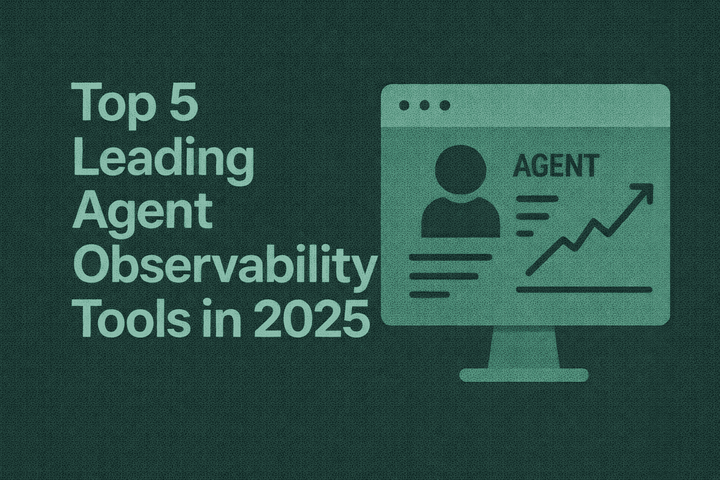Top 5 LLM Observability Platforms for 2025: Comprehensive Comparison and Guide

TL;DR
We compare the top 5 LLM observability platforms of 2025, including Maxim AI, LangSmith, Arize AI, Langfuse, and Braintrust. Each platform is evaluated across five key dimensions: tracing, evaluation, integrations, security, and scalability. The comparison outlines their strengths, features, and trade-offs to help you choose the right observability stack for your production environment.
With the rapid adoption of large language models (LLMs) across industries, ensuring their reliability, performance, and safety in production environments has become paramount. LLM observability platforms are essential tools for monitoring, tracing, and debugging LLM behavior, helping organizations avoid issues such as hallucinations, cost overruns, and silent failures. This guide explores the top five LLM observability platforms of 2025, highlighting their strengths, core features, and how they support teams in building robust AI applications. Special focus is given to Maxim AI, a leader in this space, with contextual references to its documentation, blogs, and case studies.
What Is LLM Observability and Why Does It Matter?
LLM observability refers to the ability to gain full visibility into all layers of an LLM-based software system, including application logic, prompts, and model outputs. Unlike traditional monitoring, observability enables teams to ask arbitrary questions about model behavior, trace the root causes of failures, and optimize performance. Key reasons for adopting LLM observability include:
- Non-deterministic Outputs: LLMs may produce different responses for identical inputs, making issues hard to reproduce and debug.
- Traceability: Observability captures inputs, outputs, and intermediate steps, allowing for detailed analysis of failures and anomalies.
- Continuous Monitoring: Enables detection of output variation and performance drift over time.
- Objective Evaluation: Supports quantifiable metrics at scale, empowering teams to track and improve model performance.
- Anomaly Detection: Identifies latency spikes, cost overruns, and prompt injection attacks, with customizable alerts for critical thresholds.
For an in-depth exploration of observability principles, see Maxim’s guide to LLM Observability.
Core Components of Modern LLM Observability Platforms
LLM observability platforms typically offer:
- Tracing: Capturing and visualizing chains of LLM calls and agent workflows.
- Metrics Dashboard: Aggregated views of latency, cost, token usage, and evaluation scores.
- Prompt and Response Logging: Recording and contextual analysis of prompts and outputs.
- Evaluation Workflows: Automated and custom metrics to assess output quality.
- Alerting and Notification: Real-time alerts for failures, anomalies, and threshold breaches.
- Integrations: Support for popular frameworks (LangChain, OpenAI, Anthropic, etc.) and SDKs for Python, TypeScript, and more.
Explore Maxim’s approach to agent tracing in Agent Tracing for Debugging Multi-Agent AI Systems.
The Top 5 LLM Observability Platforms
Below is a structured comparison of the leading platforms in 2025, with Maxim AI highlighted for its comprehensive capabilities and enterprise focus.
1. Maxim AI
Overview: Maxim AI is an end-to-end platform for experimentation, simulation, evaluation, and observability of LLM agents in production. It offers granular trace monitoring, robust evaluation workflows, and enterprise-grade integrations.
Key Features:
- Experimentation Suite: Iterate on prompts and agents, run evaluations, and deploy with confidence (Experimentation).
- Agent Simulation & Evaluation: Simulate agent interactions across user personas and scenarios (Agent Simulation).
- Observability Dashboard: Monitor traces, latency, token usage, and quality metrics in real time (Agent Observability).
- Bifrost LLM Gateway: Ultra-low latency gateway (<11 microseconds overhead at 5,000 RPS) for high-throughput deployments (Bifrost).
- Integrations: Out-of-the-box support for Langchain, LangGraph, OpenAI, Anthropic, Bedrock, Mistral, and more (Integrations).
- Evaluation Metrics: Automated and custom evaluation workflows (Evaluation Metrics).
- Security & Compliance: Enterprise-grade privacy, SOC2 compliance, and granular access controls (Trust Center).
Case Studies:
- Clinc: Elevating Conversational Banking
- Thoughtful: Smarter AI Workflows
- Mindtickle: Enterprise AI Quality
Documentation: Maxim Docs
Try this: Run an agent simulation across multiple user personas, trace the full workflow in the Observability Dashboard, and compare automated evaluation scores to measure consistency, latency, and output quality.
2. LangSmith
Overview: Developed by the creators of LangChain, LangSmith offers end-to-end observability and evaluation, with deep integration into LangChain-native tools and agents.
Key Features:
- Full-stack tracing and prompt management
- OpenTelemetry integration
- Evaluation and alerting workflows
- SDKs for Python and TypeScript
- Optimized for LangChain but supports broader use cases
Comparison: Maxim supports broader agent simulation and evaluation scenarios beyond LangChain-specific primitives. See detailed comparison
Try this: Enable OpenTelemetry for your LangChain app, trace your first 100 agent runs with full-stack visibility, and set up an alert workflow for prompt or tool failures using the SDK.
3. Arize AI
Overview: Arize AI provides LLM observability focused on monitoring, tracing, and debugging model outputs in production environments.
Key Features:
- Real-time tracing and prompt-level monitoring
- Cost and latency analytics
- Guardrail metrics for bias and toxicity
- Integrations with major LLM providers
Comparison: Maxim offers more granular agent simulation and evaluation features, with a focus on enterprise-grade observability. See detailed comparison
Try this: Set up real-time prompt-level monitoring for one of your production endpoints, create a guardrail metric to detect bias or toxicity, and analyze cost and latency trends over a 24-hour period.
4. Langfuse
Overview: Langfuse is an open-source LLM engineering platform offering call tracking, tracing, prompt management, and evaluation.
Key Features:
- Self-hostable and cloud options
- Integrations with popular LLM providers and frameworks
- Session tracking, batch exports, and SOC2 compliance
Comparison: Maxim provides deeper agent evaluation, simulation, and enterprise integrations. See detailed comparison
Try this: Deploy Langfuse in self-hosted or cloud mode, connect an OpenAI or Anthropic endpoint, enable session tracking for a user flow, and export batch traces for offline analysis.
5. Braintrust
Overview: Braintrust enables simulation, evaluation, and observability for LLM agents, with a focus on external annotators and evaluator controls.
Key Features:
- Simulation of agent workflows
- External annotator integration
- Evaluator controls for quality assurance
Comparison: Maxim supports full agent simulation and granular production observability, with a broader evaluation toolkit. See detailed comparison
Try this: Simulate a multi-step agent workflow, invite 3–5 external annotators to evaluate output quality, and use evaluator controls to compare consistency scores across different model versions.
Comparison Table: Top 5 LLM Observability Platforms
| Platform | Tracing & Debugging | Evaluation Metrics | Integrations | Security & Compliance | Unique Strengths | Maxim Comparison Link |
|---|---|---|---|---|---|---|
| Maxim AI | Granular, agent-level | Automated & custom | Extensive (LangChain, OpenAI, Anthropic, etc.) | Enterprise-grade, SOC2 | Simulation, experimentation, low-latency gateway | |
| LangSmith | Full-stack, prompt tracing | Custom & built-in | LangChain-native, SDKs | SOC2, OpenTelemetry | Deep LangChain integration | Maxim vs LangSmith |
| Arize AI | Real-time tracing | Guardrail metrics | Major LLM providers | SOC2 | Bias/toxicity monitoring | Maxim vs Arize |
| Langfuse | Call tracking, session tracing | Built-in & custom | Open source, cloud, frameworks | SOC2 | Session tracking, open source | Maxim vs Langfuse |
| Braintrust | Workflow simulation | Annotator controls | LLM providers | SOC2 | Annotator & evaluator controls | Maxim vs Braintrust |
How to Choose the Right LLM Observability Platform
Selecting the right platform depends on your organization's scale, compliance needs, integration requirements, and the complexity of your LLM applications. Follow these key steps:
- Step 1: Assess the Granularity of Tracing
Determine if the platform supports agent-level, prompt-level, and workflow-level tracing. - Step 2: Evaluate Evaluation Capabilities
Verify that automated and custom metrics are available for comprehensive output assessment. - Step 3: Check Integration Ecosystem
Confirm the platform is compatible with your existing frameworks and model providers. - Step 4: Review Security and Compliance
Ensure it meets your enterprise requirements for privacy and access control. - Step 5: Test Scalability and Performance
Validate that it can handle high-throughput, low-latency production workloads.
For a detailed guide on evaluation workflows, see Evaluation Workflows for AI Agents.
Maxim AI: The Enterprise Choice for LLM Observability
Among the platforms reviewed, Maxim AI stands out for its end-to-end approach to observability, evaluation, and simulation. Designed for enterprise-grade AI deployments, Maxim enables teams to iterate rapidly, monitor granular traces, and ensure quality at scale. Its unified platform and robust documentation, case studies, and blog resources provide actionable guidance for organizations building reliable, trustworthy AI systems.
Conclusion
LLM observability has evolved from a “nice-to-have” to a core requirement for reliable AI operations. The platforms highlighted in this blog represent the forefront of observability innovation, with Maxim AI leading in enterprise-grade features, integrations, and evaluation workflows. By choosing the right observability platform and leveraging best practices, teams can ensure the reliability, safety, and performance of their LLM-powered applications.
For further reading, explore Maxim’s articles on AI Reliability, Prompt Management, and Agent Evaluation vs Model Evaluation.


